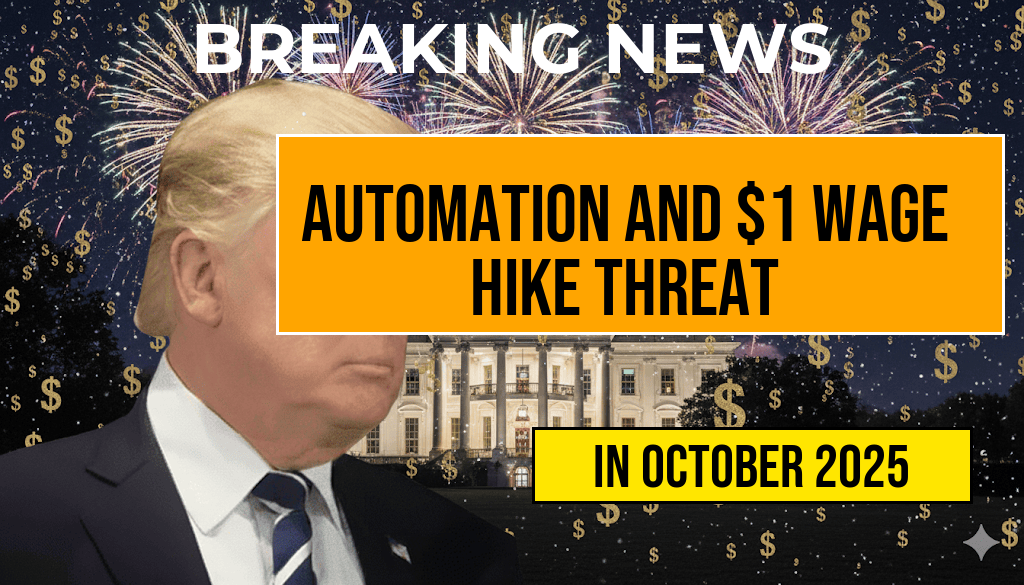Small businesses across the United States are grappling with the potential fallout of recent legislative pushes to increase the minimum wage by just one dollar. While this modest adjustment aims to boost low-income workers’ incomes, critics warn that it could inadvertently accelerate automation trends, forcing some employers to consider layoffs or replacing human labor with machines. The debate hinges on whether a minimal wage increase can significantly impact small business profitability or if it could serve as a catalyst for accelerated technological adoption. As policymakers evaluate the economic ripple effects, small business owners express concerns about maintaining employment levels amid rising operational costs and the lure of automation solutions that promise cost savings and efficiency.
Small Business Perspectives on Wage Increases
Financial Strain and Operational Challenges
For many small businesses, margins remain razor-thin, making even a one-dollar wage increase feel substantial. According to recent surveys conducted by the Small Business Administration, a significant portion of small firms report that rising wages, combined with inflationary pressures, are squeezing their budgets. Owners worry that incremental wage hikes could push them toward difficult decisions, including reducing staff or cutting back on hours.
Automation as a Cost-Effective Alternative
Automation technology has become increasingly accessible to small businesses seeking to optimize costs. From self-service kiosks in retail to robotic process automation in administrative tasks, many see automation as a viable way to offset increased labor expenses without sacrificing productivity. A report by Forbes highlights how small firms are investing in affordable automation solutions to stay competitive, especially as wages rise incrementally.
The Automation Threat: Could the One-Dollar Wage Increase Accelerate Job Losses?
Economic Theories and Real-World Trends
Labor economists debate whether small wage increases significantly influence automation adoption. Some studies suggest that even modest wage hikes can tip the scales in favor of technological replacements, especially in sectors where automation costs are rapidly declining. The Wikipedia entry on automation notes that technological advances continue to lower the barriers for small businesses to implement automation solutions.
Case Studies and Industry Examples
- Retail: Several regional retail chains have introduced self-checkout systems after wage increases, citing labor cost reductions as a primary motivation.
- Manufacturing: Small-scale manufacturers are deploying robotic arms for assembly lines, citing wage pressures and the need for consistent output quality.
- Food Service: Fast-food outlets are experimenting with automated ordering kiosks, which reduce the need for frontline staff amid rising wages.
Potential Impact on Employment and Local Economies
Job Losses vs. Job Preservation
While automation can lead to layoffs in some contexts, proponents argue it may also preserve jobs by enabling small businesses to remain operational and competitive. However, critics warn that the shift could disproportionately impact low-skill positions, exacerbating employment disparities. Data from the Bureau of Labor Statistics indicates that sectors most vulnerable to automation—such as retail and hospitality—employ a high percentage of hourly workers who are most at risk of displacement.
Regional Disparities and Economic Inequality
| Region | Estimated Automation Adoption | Potential Job Impact |
|---|---|---|
| Northeast | High | Moderate layoffs expected in retail and food services |
| Midwest | Moderate | Potential for job shifts rather than outright layoffs |
| South | Low | Less immediate automation impact, but increased wage costs may influence future decisions |
Policy Implications and Future Outlook
Balancing Wage Gains with Automation Risks
Policy debates continue over how to support small businesses facing rising labor costs without inadvertently hastening automation-driven job losses. Some economists advocate for targeted subsidies or tax incentives to help small firms invest in workforce training, enabling employees to adapt alongside technological changes. Others suggest phased wage increases to gauge economic impacts gradually.
Expert Opinions and Industry Responses
Industry leaders advise a nuanced approach. Washington Post analysts highlight that automation’s role is complex, often driven by multiple factors beyond wages alone, including labor shortages and evolving consumer preferences. Small business associations emphasize the importance of ongoing dialogue between policymakers, technology providers, and entrepreneurs to craft sustainable solutions.
Final Thoughts
The prospect of a one-dollar increase in the minimum wage might seem modest, but its ripple effects could be substantial for small businesses. While some see automation as a means to manage rising costs, others fear it could lead to job reductions, particularly in sectors heavily reliant on hourly labor. As the landscape evolves, the key challenge lies in balancing fair wages with maintaining employment and fostering technological advancement that complements human labor rather than replacing it entirely. Policymakers and business leaders must navigate this delicate balance to ensure economic resilience without sacrificing job opportunities for vulnerable workers.
Frequently Asked Questions
What is the main concern regarding the one-dollar wage increase for small businesses?
The primary concern is that the additional cost may compel small businesses to lay off employees or reduce staffing levels to maintain profitability.
How might automation become a threat to employment due to wage increases?
As wages rise, small businesses might seek cost-effective alternatives like automation and technology to replace human labor, potentially leading to job losses.
What industries are most likely to be affected by this wage increase and automation threat?
Industries heavily reliant on low-wage labor, such as retail, hospitality, and food service, are most vulnerable to automation adoption and staff reductions due to increased wages.
Are there any potential benefits of the wage increase for small business employees?
Yes, the wage increase could improve earning potential for low-wage workers and enhance overall employee satisfaction, although it may also pose economic challenges for business sustainability.
What strategies can small businesses adopt to mitigate the risks associated with wage increases and automation?
Small businesses can invest in employee training to improve productivity, explore cost management strategies, and consider incremental automation to balance costs and employment.






